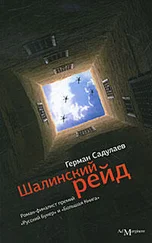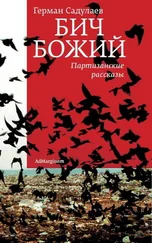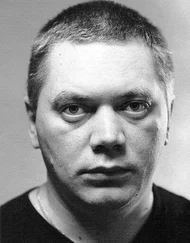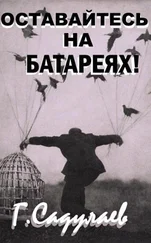Many scholars hold to the opinion that the Rus were Scandinavians. This is not necessarily so. Most likely the Rus comprised international merchant communities and ships’ crews. Such groups may have included Scandinavians, as well as Finns and Slavs. Scandinavian sources do not identify the Rus as a people with a single distinct ethnicity.
The Rus are mentioned in the chronicles during the tenth and eleventh centuries, after which the concept expands and evolves: the Russian land, Rus, Russia. Who the initial Rus were remains an open question… But in the era of trade revolution the division of people into Rus and Slavs, in my opinion, is of broad sociological importance.
Even more interesting is the fact that Arabic, Byzantine, and European sources use the title “Hakan” (Khagan) to identify the rulers of Rus during the time when Staraya Ladoga was its capital. Ibn Rustah writes:
Ar-Rusiyi is located on an island in the middle of a lake. The island on which they live is a three-day’s journey in length, is covered with forests and swamps, and is so unhealthy and damp that the earth squishes underfoot with every step. They have a tsar, called the Hakan of the Rus. They come up by river, by ship, attack the Slavs and take them prisoner, transport them to Khazaran and Bulkar, and sell them there. They do not cultivate the land; they eat only what is brought in from the land of the Slavs… They do not claim ownership of land or villages. Their only occupation is trading sable, squirrel, and other furs, which they sell to buyers. They receive payment in coins that they keep in the folds of their belts… They treat their slaves well and clothe them well, for they are objects of trade. They have many towns, and they lead an unconstrained life. They treat guests with respect, including travelers who come from foreign lands and seek their protection… And if one of them raises a complaint against another, he is summoned to the tsar’s court, where they argue their cases. When the tsar pronounces his sentence, what he has commanded is carried out. And if both sides are dissatisfied with the tsar’s decision, then the issue is resolved by his command with weapons, and whichever one of them has the sharper sword is victorious… They have sorcerers, znakhary , some of whom issue orders to the tsar as though they were the rulers.
The same Arab author wrote that there were a hundred thousand people—Rus—on this island (Novgorod or Staraya Ladoga). And they all lived by preying upon the Slavic population. You might be curious to know how many Slavs there were at that time. It turns out that during the centuries after Rus, the northern lands went into decline. The desolation of the Russian lands might also have come as a result of the Khazar curse.
With the above erudite citations I hereby conclude my commentary on Pushkin’s poem.
Now let us move on to a survey of the purely historical works concerning Khazaria—though due to the dearth of reliable factual material they differ very little from the literary sources; the only difference is in their purported genre and in the ambitions of their authors, who claim to be providing reliable historical accounts. Nonetheless, an impressive number of books and articles have been written on the subject. A. A. Astaikin has compiled a bibliography of works on the history of Khazaria. I counted two hundred titles and then gave up.
According to A. P. Novoseltsev, the beginning of Khazar studies in Europe is may be traced to the well-known seventeenth-century scholar I. Burksdorf, who published a bilingual edition—the original along with a Latin translation—of the famous Khazar Correspondence. The first purely scholarly Russian (Soviet) work on the history of Khazaria was written by academician M. I. Artamonov. Abroad, the most famous work is D. M. Danlop’s The History of the Jewish Khazars .
Lev Nikolaevich Gumilyov, the great Eurasian scholar and Turkophile, penned his own history of Khazaria. Along with his many other historical and theoretical achievements, he discovered Samandar, the ancient capital of Khazaria that predated even Itil. He published an account of his expedition to the area, which goes roughly as follows: The research expedition traveled in the area around the Terek, through Chechnya and Dagestan, but didn’t come across anything promising. At that point the expedition had seemed to run dry, along with its funding and the fuel for their vehicles. Then some hills come into sight, the first they had seen, and Lev Nikolaevich said: “Well look there! There it is! Samandar at last, for sure! Samandar. We will have to come back here.”
As far as I know, no one ever did go back; now the hills in those lands are completely different, and no one there has any interest in Samandar.
Actually, I love Gumilyov and respect him as an author; it’s just that it makes a lot more sense to read his books as fiction rather than history.
Whatever the case, eminent scholars have come up with a history of Khazaria that reads something like this:
Sixth to seventh centuries: the collapse of the Western-Turkish Khaganate, with Khazaria rising on its ruins, ruled by the Turkish Ashin dynasty.
Eighth to ninth centuries: war between the Khazar Khaganate and Iran; Judaism enters the region. Clashes with Varangians; alliances and divisions of spheres of influence.
Ninth to tenth centuries: Khazaria and Rus at war. The fall of Khazaria.
Eleventh to thirteenth centuries: the disappearance of Khazaria from the political map of Eurasia.
The capitals of the Khazar realm were, in order, Belendzher, Samandar, and Itil. A pattern comparable to that of the Russian capitals: Kiev, Moscow, and St. Petersburg. Other important cities include Savgar and Serkel (Belaya Vezha); the last of these was built by Byzantine engineers.
Among the political customs of Khazaria, the more interesting included: power sharing between the Khagan and the Bek; a distinctive inauguration procedure during which the Khagan was throttled with a silken thread; and the Khagan’s harem, made up of princesses taken from conquered lands and allied tribes.
During the early years, when Samandar was presumed to be its capital, the economy of Khazaria was based on agriculture, primarily viticulture, and fishing. Later, when the capital moved to Itil, transit trade began to flourish. Merchants who came from other lands noted with some surprise that the Khazars were able to thrive on trade, though they produced nothing at all in their country except for a suspicious-looking substance they called “fish paste.”
As for the appearance of the Khazar people, travelers reported that there were “white” and “black” Khazars. The “whites” were tall, blond, and blue-eyed, resembled Swedes, and represented the elite of their society. They were served by the “blacks,” who had dark hair and skin and were short of stature and were of generally unprepossessing appearance. Soviet historians expressed some doubt about this division and conjectured that the differences between the elite and the common people had nothing to do with race: Perhaps, they theorized, the Khazar proletariat just didn’t have many opportunities to bathe.
It is also known that when the Khazars besieged the Armenian capital, the latter initiated the world’s very first Halloween celebration, setting out in view of the Khazar warriors a huge pumpkin with carved-out eyes and a straw beard stuck on the bottom. They told the Khazars: “This is your Khagan!” For some reason the Khazars took offense, and the episode led to a bloodbath.
The Khazar Khaganate had an active foreign policy. They established alliances and declared wars, spread their influence and participated in the lives of both European and Asian states, leaving traces in many foreign chronicles. For example, the Byzantine emperor Mikhail III once called Photius, the Patriarch of Constantinople, a “Khazar-face.” But for all that, Khazaria didn’t leave a single written source for its future historians.
Читать дальше












